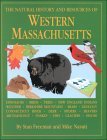Monson, Massachusetts
Monson Congregational ChurchContributed by Rev. Charles B. Sumner, Pastor.
The Monson Congregational Church was organized June 23, 1762. The original members—12 males and about the same number of females--were mostly received by letter from the church in Brimfield. Since the incorporation of the town, nearly two years before, Sunday services had been held alternately in the houses of Deacon Benjamin Munn and Lieutenant Thomas Stebbins, situated four miles apart, in the Southern and Northern Districts. The first meeting-house, in an unfinished state, was the place of organization. In the poverty of the people the General Court had granted a special tax of a penny an acre on all the lands in the town to help them build it. The site of this house of worship was near the centre of the township, on the summit of a hill which overlooks the valley, a little southwest of the present house. Often the expression rises to the lips of those who are passing by, "Beautiful for situation is Mount Zion." The building was rectangular, about twenty feet high, without chimney or steeple, lighted by a single row of small windows. For some years the inside was left unfinished, seated only with rude boards. It seems to have been poorly suited to the rigor of the climate, for the town voted, Dec. 17, 1762, "to remove the meeting from the meeting-house for the winter season." At length the lower part was finished, floors laid, pews put in, and gallery-stairs built. The upper part was never finished, the rough beams, joists, rafters, boards, and bristling nails taking the place of modern frescoing. This house was used forty-one years, until another was completed, when it was taken down. Mr. Abishai Sabin, a native of Pomfret, Conn., and a graduate of Yale College in 1759, was ordained and installed pastor, by the same council, and on the same day that the church was organized. Little is known of this pastorate of nine years beyond the use of the "half-way covenant," which was discontinued in the succeeding one. Mr. Sabin was dismissed at his own request, on account of poor health, in July, 1771, and, without having assumed another charge, died in his native place in 1782. The Rev. Jesse Ives succeeded to the pastorate, and retained it more than thirty-two years, from June 23, 1773, till his death, Dec. 31, 1805. Mr. Ives was born at Meriden, Conn., was a graduate of Yale College in 1758, and had been settled in the town of Norwich, Conn. He was a tall, erect man, with a bright, ready mind, and notably "gifted in prayer." His pastorate, through the most eventful period of our nation's history, was not without trials. It was, however, on the whole very peaceful and remarkably useful, leaving the number of the church membership 111. Toward its close a new meeting-house was built and the Academy Hall erected, both costing about $9000. This amount was all raised voluntarily except $300, which was voted by the town for the meeting-house. This second house of worship, situated very near the site of the first, was dedicated Nov. 16, 1803. It was said to have been the best in the county at that time. The building was rectangular, 80 feet long by. 50 wide, and of good height, lighted by a double row of windows. The steeple was the low open one, so common at that time. Originally there was but one room, with galleries on three sides. In 1838 the galleries were taken out, except across the south end; a floor put in 12 feet above the old one; the old square pews were replaced by modern ones, and the walls were frescoed. The cost of these repairs was $3000. This house, after being used sixty-eight years, was sold in 1871, and removed to the foot of the hill, where it is used for a hall and stores. Mr. Alfred Ely, the third pastor, was retained more than sixty years, from Dec. 17, 1806, until his death, July 6, 1866. He was a man of vigorous intellect, good judgment, decided organizing and executive ability, and of a strong and leading character. His influence was felt throughout this whole region of country. His character, perhaps more than his scholarship, although that was by no means lacking, gained for him the title of Doctor of Divinity from his alma mater in 1834. For forty-six years he was president of the board of trust of Monson Acadethy, where he did efficient service. The year Amherst College was incorporated he was appointed one of the corporation by the Legislature, and was faithful to his trust. In 1840 he was made corporate member of the A. B. C. F. M., an appointment richly deserved for his abiding interest and valuable services in the cause of foreign missions. During this pastorate the church grew and developed rapidly. It was one of the largest, most active, and efficient churches in Western Massachusetts. A Baptist Church was organized in 1795, in the western part of the town, and in 1825 the Methodist Church was formed; but the strength and vigor of this church did not materially suffer thereby. The Sunday-school was organized April 21, 1819, with the pastor as superintendent, and at one time it is said to have included nearly the *hole congregation.
| Previous Page | Table of Contents | Next Page |
| Monson Page | | Hampden County | Western Mass History & Genealogy These pages are © Laurel O'Donnell, 2006, all rights reserved
Copying these pages without written permission for the purpose of republishing in print or electronic format is strictly forbidden This page was last updated on 13 Feb 2006 |
